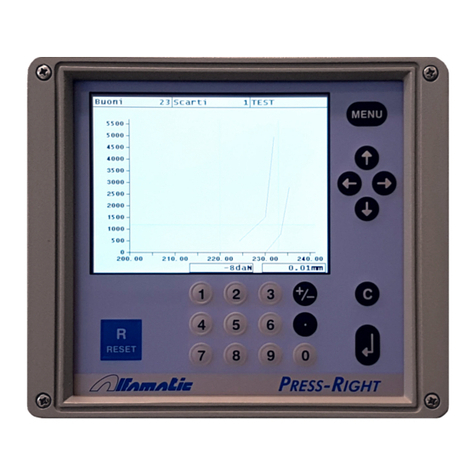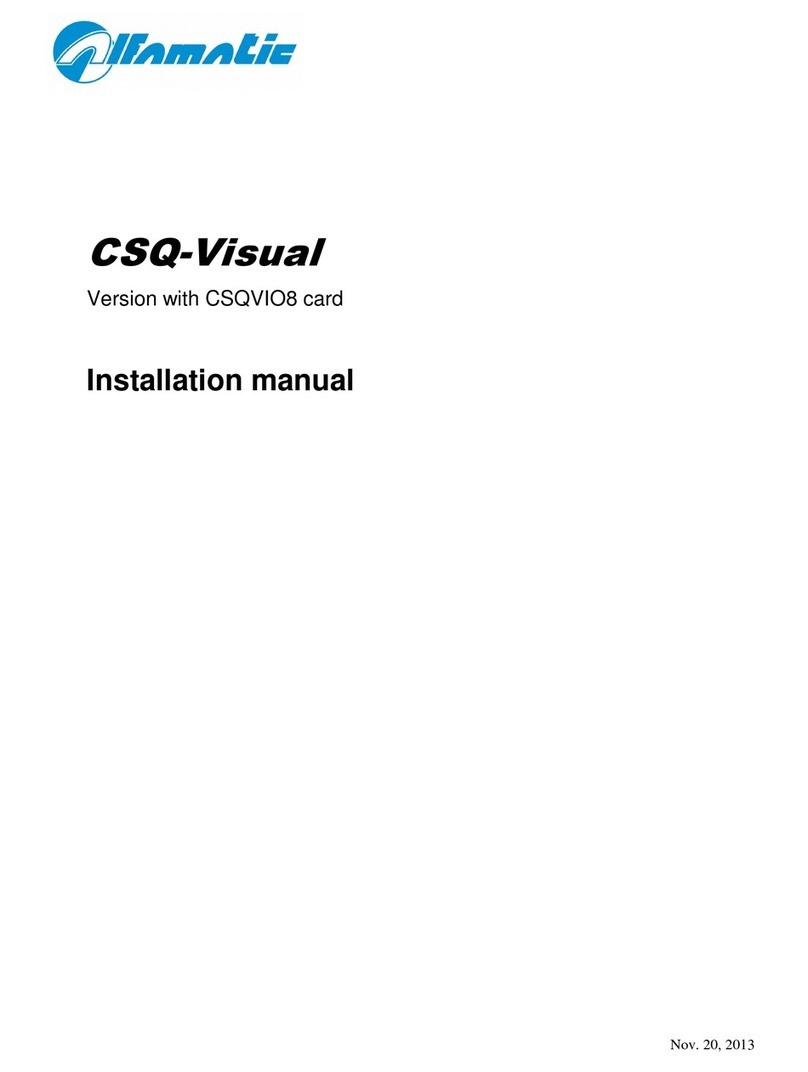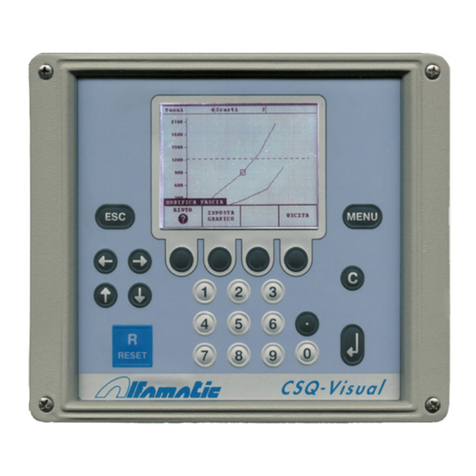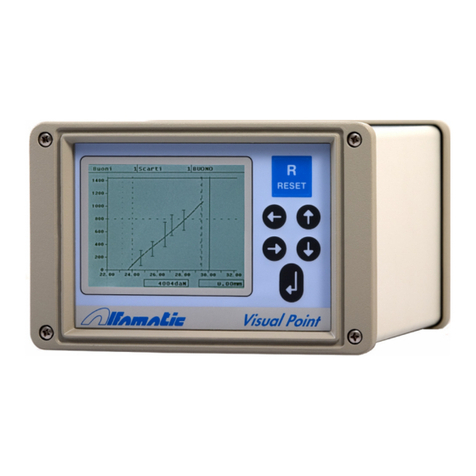
4
1 Installing CSQ-Visual
This paragraph describes the operations necessary to fit and connect the CSQ-Visual to the machine
and make it operative.
The CSQ-Visual has been designed to be independent: a you have to do is connect the va ves and
sensors that wi be powered by the instrument. Natura y there’s nothing to stop you from
combined use with a PLC.
To operate, the CSQ-Visual requires different input and output signa s. As regards the inputs, a
force transducer ( oad ce ), a position transducer (incrementa encoder, potentiometer or 0-10 V
transducer) and various sensors are required. The outputs are connected to the unit descent
enab ing va ve, the protection c osure va ve (where insta ed) and the warning ights.
1.1 Important notes for installation
This manua refers on y to the instrument with expansion card VIO9.
The CSQ-Visual has to be powered at 24VDC. An optiona interna power feeder is
avai ab e, enab ing direct connection to the mains power.
This instrument is not (and cou d not be) a safety device: the descent of the press must be
entrusted to e ements outside the instrument. The instrument synchronises the descent of
the press in order for it to work.
It is very important for the oad ce wire termina , which is not sheathed, to be as short as
possib e.
When the machine has e ectric motors, these must be equipped with an anti-interference
fi ter and be contro ed using semiconductor devices.
A ways connect the container of the instrument to the earth conductor.
1.2 Operating of the instrument
Attention: the CSQ-Visual is not (an coul not be) a safety evice: the escent of the press must
be entruste to external elements. The CSQ-Visual synchronises the escent for its operation.
The GO Output is usually connecte serially to the chain of the cylin er escent. In short, if the
CSQ-Visual activates the GO enabling output, the cylin er must not escen if it is not safe.
Operation takes p ace as fo ows: when the START input is activated by an externa command, the
CSQ–Visual, if ready, activates the protection descent output (PROTECTION) where present and
enab es the cy inder descent (GO). When the protection is c osed, a safety device must activate the
cy inder unti the CSQ-Visual removes the cy inder descent enab ing signa (GO). The CSQ-Visual
then commands the arrest of the press, removing the GO signa , contro s the curve unti the force
begins to diminish or is activated by way of the T.D.C. input (withdraw cy inder signa ). On y then
does it indicate whether or not the piece is good or a reject.
If the piece is good, the GOOD output is activated and the PROTECTION output, where present, is
deactivated. If the piece is a reject, the REJECTED output is activated intermittent y and the
PROTECTION output, where present, is eft active. When the operator presses the reset button,
which can be externa or a ways active, the instrument maintains the REJECTED output as fixed
and removes the PROTECTION output.



































